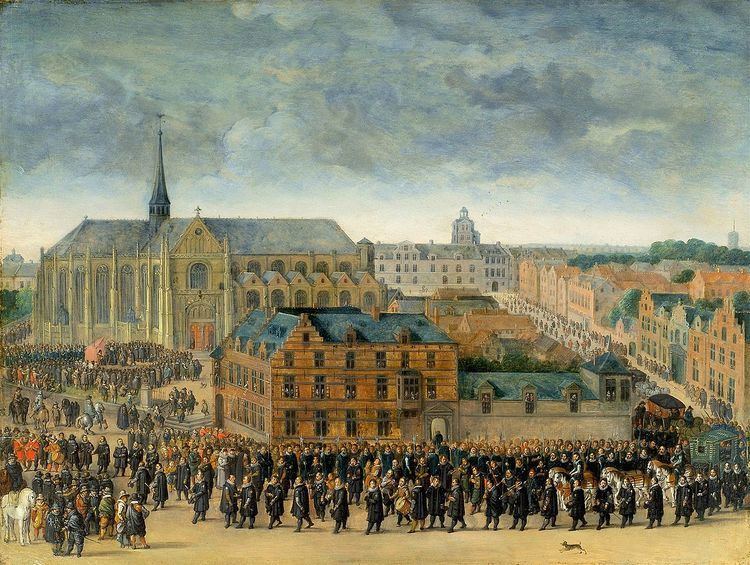 | ||
The Ommegang of Brussels is a traditional Ommegang that nowadays takes place twice a year, at the turn of June and July.
According to legend the origin of the Ommegang goes back to a local devout woman named Beatrijs Soetkens. She had a vision in which the Virgin Mary instructed her to steal the miraculous statue of ‘Onze-Lieve-Vrouw op ‘t Stocxken’ (Our Lady on the little stick) in Antwerp, bring it to Brussels and place it in the chapel of the Crossbow Guild. The woman stole the statue and through some miraculous events was able to bring it to Brussels by boat in 1348. The statue of Mary was then solemnly placed in the chapel and venerated as the patron of the Guild. The Guild promised to hold an annual procession, called an 'Ommegang', in which the statue was carried through Brussels. However, what was originally a religious procession, took on through the following decades gradually a more worldly outlook. From the mid-sixteenth century, the Ommegang not only celebrated the miraculous legend, but became intertwined with the Joyous Entry of Holy Roman Emperor Charles V. The Ommegang thus developed into an important religious and civil event in the annual calendar of Brussels.
Originally it was the largest lustral procession of Brussels, which took place once a year on the Sunday before Pentecost.
The term Ommegang, in Latin "circumambulatio" means "walking around" in Old Flemish and it is an old historical evocation of Brussels. It joins the tradition of the great processions of notable riders and giants that are found everywhere in Belgium and northern France. Its starting point is the Sablon.
